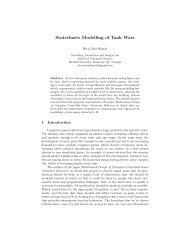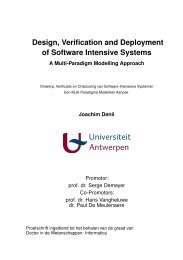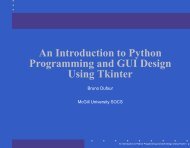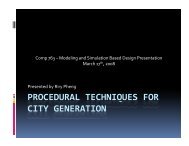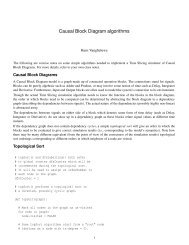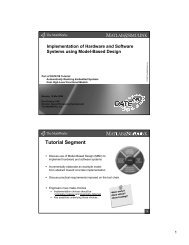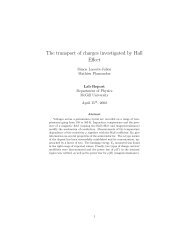Object-oriented framework for modelling and ... - ResearchGate
Object-oriented framework for modelling and ... - ResearchGate
Object-oriented framework for modelling and ... - ResearchGate
Create successful ePaper yourself
Turn your PDF publications into a flip-book with our unique Google optimized e-Paper software.
tions (2) <strong>and</strong> (3) induce little modifications of the Time <strong>and</strong> Cell classes. This phase represents the last<br />
abstraction level of a PIM.<br />
6.1 The pure event scheduling approach<br />
For neighbour-to-neighbour propagation, a generic rule can be implemented in the Cell space class to<br />
control the evolution of the calculation domain (corresponding to the set of active cells). To control the<br />
domain evolution, propagation states have been added to the cells (testing <strong>for</strong> the cells at the edge of the<br />
propagation, non testing <strong>for</strong> the cells whose state is not tested at each state transition <strong>and</strong> quiescent <strong>for</strong><br />
the inactive cells in quiescent state).<br />
A neighbour-to-neighbour propagation example is sketched in Figure 11 <strong>for</strong> a cardinal neighbor-<br />
hood. In our algorithm, only the bordering cells test their neighborhood, this allows to reduce the num-<br />
ber of testing cells. The test depends on the cells’ state. If the tested cell fulfils the requested condition,<br />
the cell becomes an active cell <strong>and</strong> new tested neighboring cells are added to the set of active cells.<br />
?<br />
?<br />
?<br />
? ? ? ?<br />
?<br />
?<br />
t t+h<br />
?<br />
t+2h<br />
Propagation states<br />
non testing testing<br />
quiescent<br />
Figure 11: Evolution of the calculation domain<br />
?<br />
24





